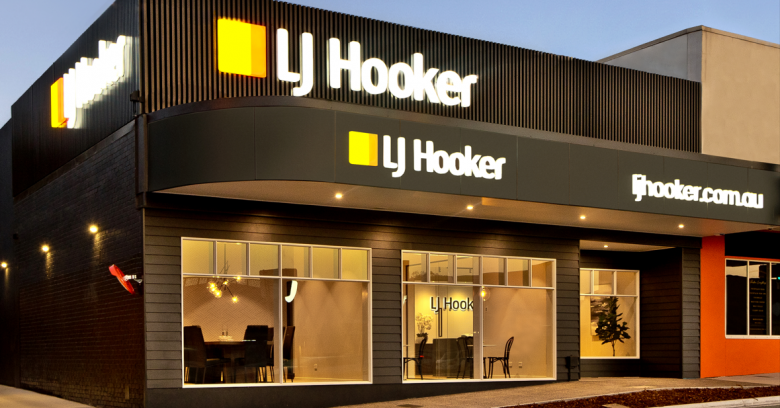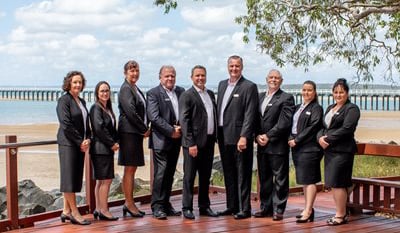Interest rates to play a crucial role in shaping the 2025 property market
An above-average number of listings is expected to keep Australian property sales busy in 2025, but market performance will be dependent on when the Reserve Bank of Australia reduces interest rates, according to LJ Hooker Group Head of Research and Business Intelligence Mathew Tiller.
Homeowners are likely to look to capitalise on recent price growth in the year ahead, while buyer demand should remain consistent, driven by strong population growth, steady employment markets, rising wages, low rental vacancy rates and a severe shortage of newly constructed houses.
The higher-for-longer interest rate environment is putting pressure on household budgets and mortgage holders, Mathew said. The RBA is, however, unlikely to take any action before May due to persistent inflation, robust employment markets and global economic uncertainty.
“Interest rates will heavily influence market performance in 2025, and the impact will be dependent on the timing and depth of rate cuts,” he said. “An earlier announcement and a significant reduction will likely strengthen the market, while prolonged rate stability at elevated levels may soften conditions.
“Some buyers are entering the market early, anticipating increased competition once rates are cut. Others are waiting for reduced interest rates to improve borrowing capacity and ease household budget pressures.”
Price growth will continue to vary across Australia by geography, property type and price point, creating unique opportunities for buyers and sellers in different markets.
Hotspots for 2025 include affordable suburbs with new infrastructure, transport links and housing supply. Among those to watch include Wattle Grove and Blacktown in Sydney, Springfield Lakes in Brisbane, and Hillcrest in Adelaide.
According to the LJ Hooker Group, the 2025 Federal Election will have a minimal market impact with both major parties lacking transformative housing policies. Housing supply remains constrained due to high construction costs, labour shortages and lengthy planning processes.
“Government action on housing supply by dramatically improving the feasibility of building new homes will be critical to addressing the longer-term supply imbalance,” continued Mathew.
“We need our politicians to step up with direct funding for house projects, streamlined planning systems, reduced taxes and levies, and increased skilled construction worker immigration, especially for regional areas.”
Investors have been de-leveraging portfolios under cashflow pressure from high interest rates, with those who have purchased in Victoria particularly impacted by new taxes and regulations. Some investors, however, have diverted their attention to high-growth regions in South Australia, Western Australia and southeast Queensland; a trend expected to continue in the year ahead.
Overall, Mathew believes the Australian property market is set for another highly active 12 months. Strong capital gains achieved over the past 12-to-18 months will appeal to owner-occupiers looking to downsize or take advantage of high sales prices.
“Sellers who act early may capture motivated buyers in the post-holiday period, while those waiting for rate cuts could benefit from increased competition and potential sales price growth,” he said.
“Buyer demand remains solid, albeit concentrated in more affordable areas of the market, and this is true for investors, too.”
2025 State and Territory Forecast
New South Wales:
Investors and owner-occupiers upgrading to larger homes will dominate to take advantage of high listings and slower price growth. First-home buyers are active in outer suburbs.
Metro hotspots: Mosman, Freshwater, Blacktown, Wattle Grove
Regional hotspots: Orange, Warrawong
Victoria:
Improving rental yields and growing affordability are set to draw interest from investors and first-home buyers.
Metro hotspots: Werribee, Frankston
Regional hotspots: Geelong, Ballarat
Queensland:
Infrastructure projects ahead of the 2032 Olympics continue to attract investors and interstate migrants which will see price growth remain above average.
Metro hotspots: Coorparoo, Springfield Lakes
Regional hotspots: Toowoomba, Nambour
South Australia:
Owner-occupiers, investors and retirees are drawn to Adelaide’s affordability and lifestyle and should continue into 2025. Price growth is expected to moderate as listings pick up.
Metro hotspots: Hillcrest, Seacliff
Regional hotspots: Port Lincoln
Western Australia
Ongoing strong rental yields will continue to attract investors. There is an undersupply of new homes and listings, although solid economic activity will see price growth remain strong.
Metro hotspots: Innaloo
Regional hotspots: Busselton, Geraldton
Tasmania
Market will hold steady in 2025 and will see an uplift in activity once interest rates fall. Demand from retirees and lifestyle buyers seeking affordability in regional and coastal areas.
Metro hotspots: Kingston
Regional hotspots: Devonport, Launceston
Northern Territory
Investors and first-home buyers are drawn by low entry prices. There are solid levels of investment in energy, mining and defence moving into the NT over the coming years. This will in turn see a more active property market as population and employment levels rise.
Metro hotspots: Parap, Zuccoli
Regional hotspots: Braitling
Australian Capital Territory
Ongoing demand from public sector employees and contractors. Looking forward, post-election confidence and potential rate cuts may bring investors back to the market.
Metro hotspots: Kambah, Wright, Amaroo
Share


